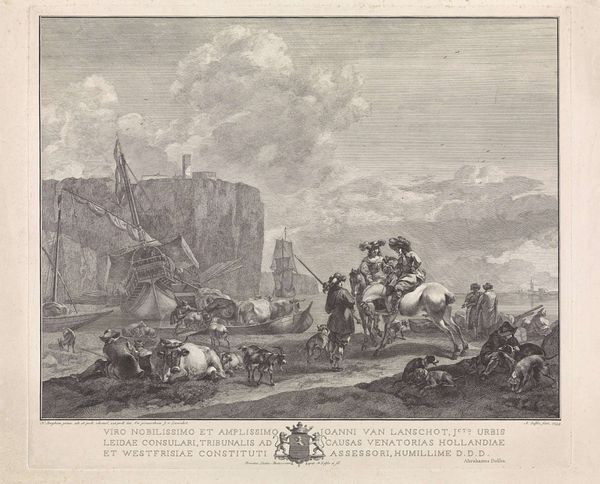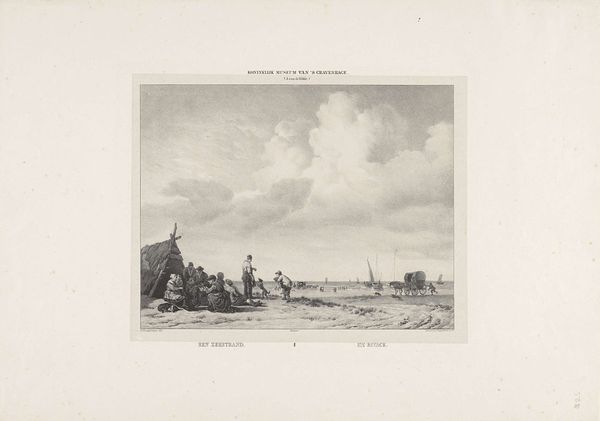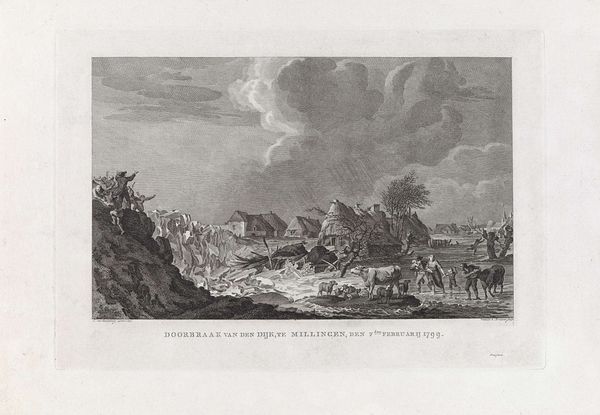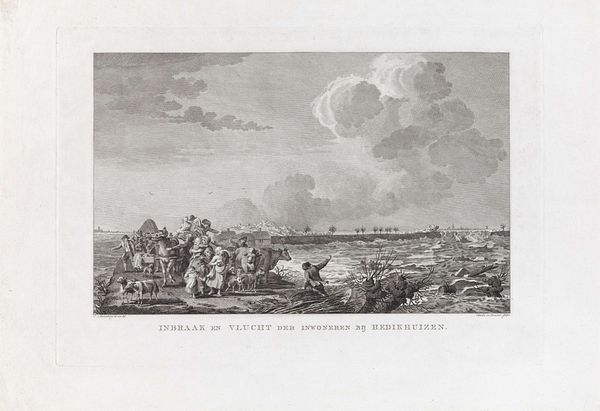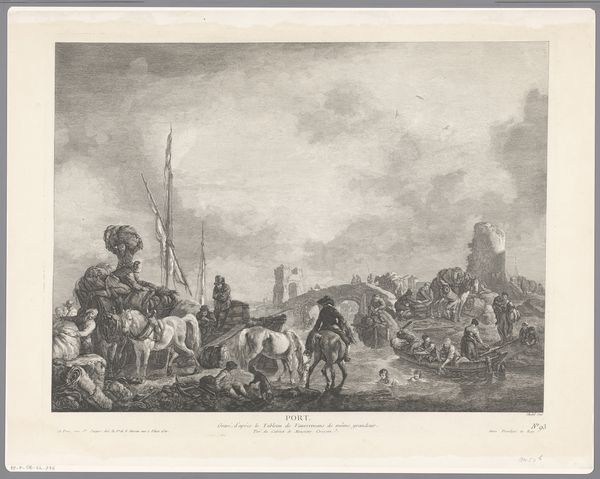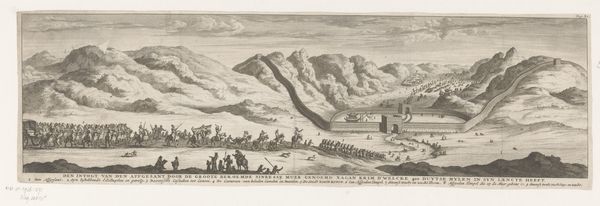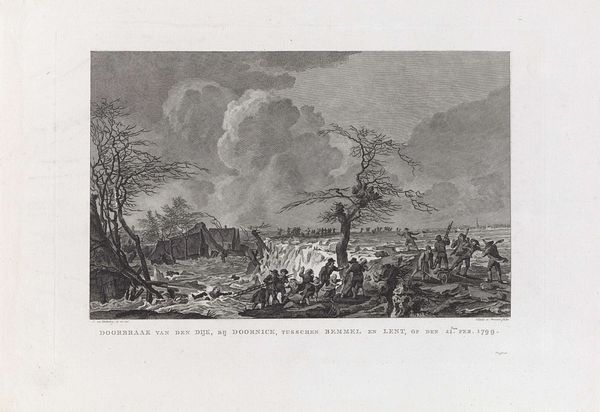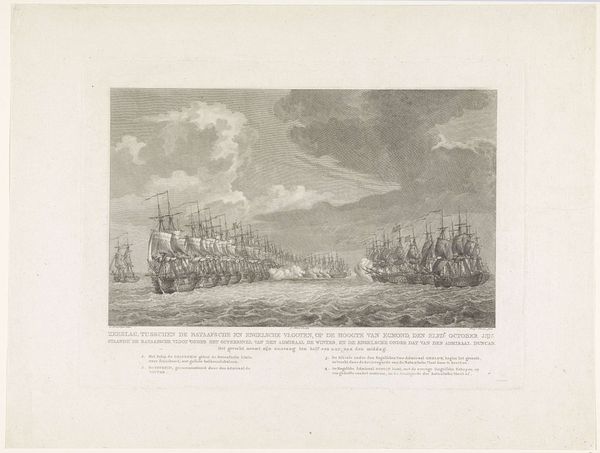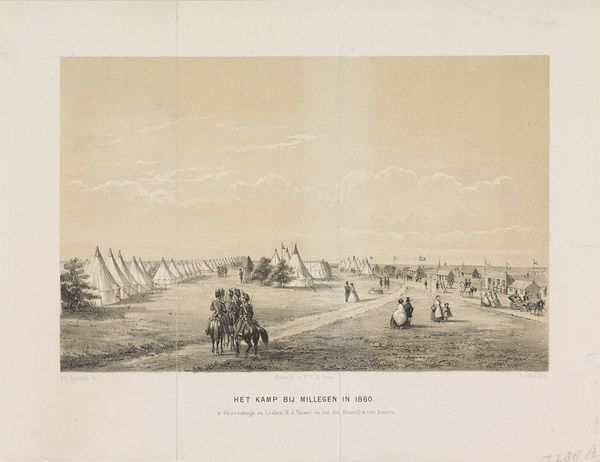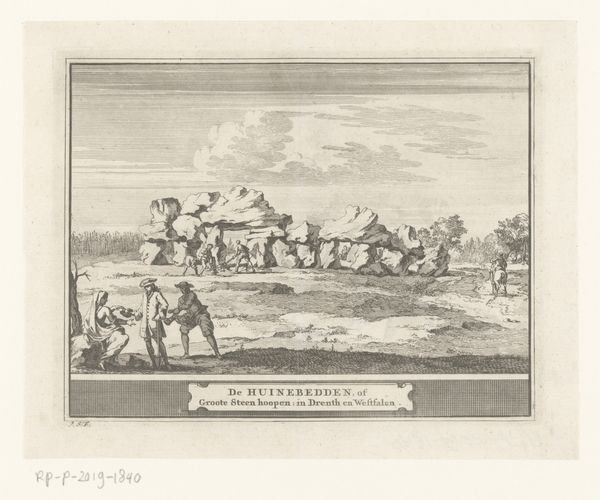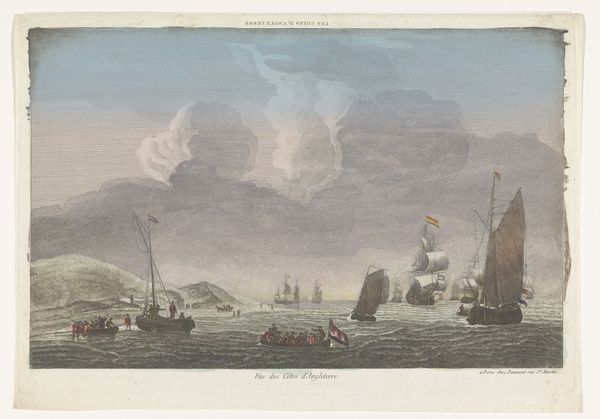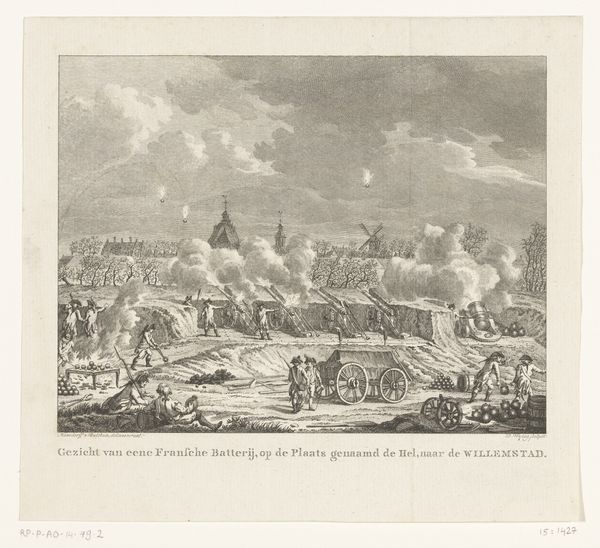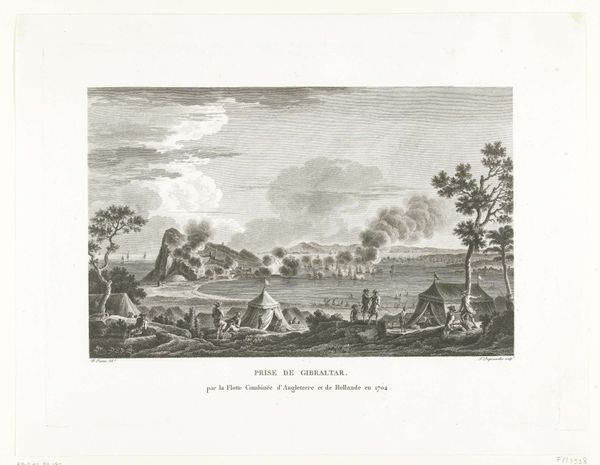
print, engraving
# print
#
landscape
#
cityscape
#
history-painting
#
engraving
#
realism
Dimensions: height 228 mm, width 328 mm
Copyright: Rijks Museum: Open Domain
Curator: This engraving, dating from 1799 to 1800, is entitled "Overstroming bij Haarsteeg", or "Flood near Haarsteeg." It is attributed to Reinier Vinkeles and currently resides in the Rijksmuseum's collection. Editor: My initial response is one of somber reflection. It conveys a stark reality through dramatic light and shadow, illustrating vulnerability amidst environmental disaster. It is really affecting. Curator: Absolutely. It depicts the impact of the Haarsteeg flood, but let's think about the engraving itself. What kind of labor would have gone into such detailed lines? What were the distribution networks for prints like this at the time, and how did this medium serve as both documentation and propaganda? Editor: You make a powerful point about documentation. If we look beyond just a depiction of a flooded town, the symbols evoke enduring themes: water as chaos, dwellings invaded. Note the reaching figures struggling against the current—they're iconic representations of resilience. Do you think the rising water held any significance at that time, considering rising sea levels, etc. ? Curator: It absolutely might. This print served a dual purpose: memorializing the disaster and providing a stark political message. In terms of production, the reproducibility of engraving allowed for mass distribution. I wonder, to what extent did these kinds of artworks generate conversation in society, even on climate issues and the management thereof? Editor: Perhaps. I am more struck by how, even today, the image of figures battling overwhelming forces touches us on an emotional level. That image of families reaching out towards rescue recurs throughout art history as a basic human struggle: a cultural signifier of our shared predicament. Curator: Thinking about art as documentation and medium of spreading important information makes one consider its enduring influence as a social catalyst and historical document. Editor: Exactly. What remains is the deep echo chamber this creates – its powerful imprint remains, across media and generations.
Comments
No comments
Be the first to comment and join the conversation on the ultimate creative platform.
